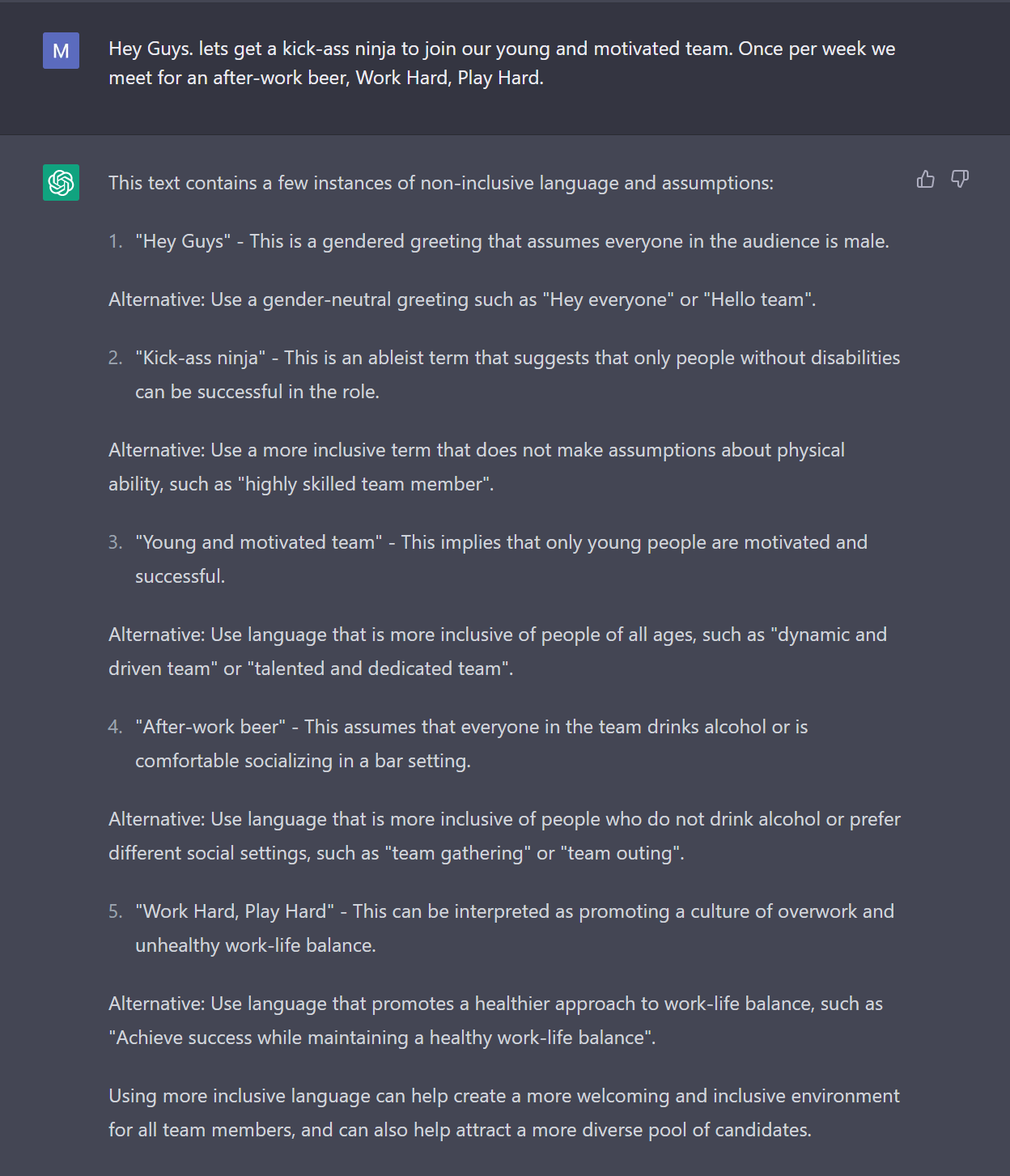At MOSTLY AI, diversity and inclusion are not just buzzwords. We embrace diversity. We believe in equal opportunities for everyone, no matter their nationality, ethnicity, gender, religion, sexual orientation, age, seniority level, marital status or disability status.
What is inclusive language?
Inclusive language involves avoiding language that may be exclusionary or offensive to certain groups of people. For example, using gender-neutral language instead of gendered language (such as "they/them" instead of "he/she") can help to be more inclusive of non-binary and gender non-conforming individuals. Similarly, avoiding ableist language (such as "crazy" or "lame") can help to be more inclusive of people with disabilities.
Inclusive language also involves using language that is appropriate and respectful of different cultures and backgrounds. For example, using the correct pronunciations and spellings of people's names from diverse backgrounds, or avoiding cultural stereotypes and assumptions.
TL;DR inclusive language is about being mindful of the impact that language can have on others and taking steps to use language that is respectful, inclusive, and welcoming to all.
Why using it?
By using language that is sensitive to and respectful of people from diverse backgrounds, all Ⓜ️ostlies will feel welcomed, valued, included, and respected.
Tips
Not cool | Cool | Why |
|---|---|---|
"crazy", "insane" | "wild", "bananas", "unbelievable", | Mental health sensitivity |
"ghetto" | "Legacy", "Outdated", "Ugly" | Word originated with exclusionary housing |
"guru", "ninja" | "Expert" | Cultural appropriation |
"male", "female" | "man" "woman" | Male and female are not genders, they are |
"master" (branch) | "main", "production" | Negative connotation |
"master/slave" (databases) | "primary/secondary", "writer/reader" | Negative connotation |
"post-mortem" | "incident review" | Negative connotation |
"preferred pronoun," "what is your preferred pronoun?" | "pronoun," "what pronoun do you use?" | Gender inclusion, implies identity is a preference |
"sanity check" | "validate/validation" | Mental health sensitivity |
"sexy" | "Wonderful", "Inspiring", "Thoughtful", "Interesting" | Professional language |
"white-listing", "black-listing" | "approved list" "non-approved list" / "allow-list" "deny-list" | Negative connotation |
“guys”, "you guys" | "Folks", "Everyone" "You all" | Gender inclusion |
"a disabled person" | "a person with a disability" | Instead of using labels that define a person by their disability, use person-first language that emphasizes the person before their disability. |
Here’s some great tips from Chat GPT:
This is a living document. Please feel free to add your tips.
